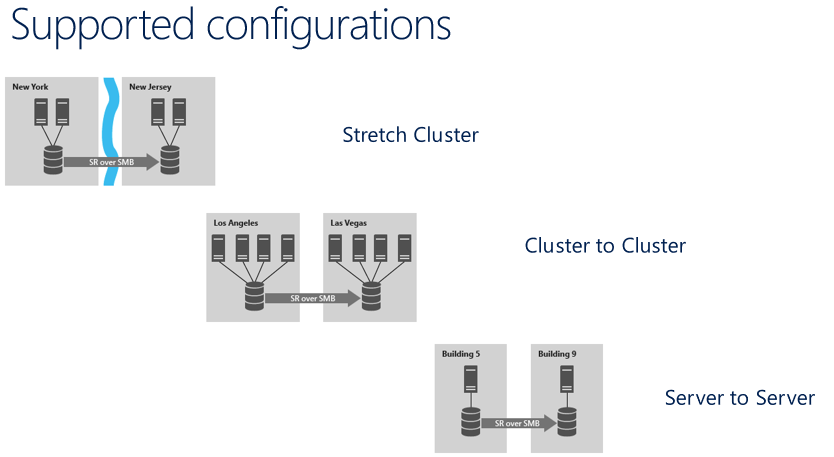Storage Replica in Windows Server 2016
Windows Server 2016 - Storage Replica

Microsoft released many new technologies into the wild when Windows Server 2016 went generally available in the Autumn of 2016. Some of these such as the new software defined networking model with the Azure Load Balancer built in and the new Network Controller role, along with Storage Spaces Direct (S2D) stole a lot of the thunder.
Storage replica was among those new technologies and suffered from the headline features taking all the glory. It is about time Storage Replica got a little more press. This post is intended as a primer for Storage replica in Windows Server 2016 and what is likely to be coming along in Windows Server 2019 this Autumn.
So what is Storage Replica, what are its use cases and why would I buy the Datacenter edition to be able to use it?
Yes - this is one of the high value product areas that Microsoft restricted to the Datacenter edition of the product in Windows Server 2016.
First, what is Storage Replica?
Well storage replica allows you to replicate data in volumes, it is different from services like OneDrive and Azure File Sync in that this does not handle files it is a block replicator and it absolutely does not care what your blocks are stored on. The storage fabric is not important. This service is also available synchronously or asynchronously. So Storage replica allows you to copy your disk volumes in real time and therefore gives you a full Disater Recovery (DR) solution, built in for no extra cost. No extra hardware and no extra skills needed to manage the infrastructure.

The synchronous replication does require a fast wide network connection with an average round trip latency of 5ms. So for this type of replication you would need fibre cable and a maximum of around 50KM separation. This does not provide full geographic DR but does bridge the gap and does prevent spending many tens or hundreds of thousands of pounds or dollars on a traditional DR solution.
- Synchronous replication mirrors data within a low-latency network site with crash-consistent volumes to ensure zero data loss at the file-system level during a failure.
- Asynchronous replication mirrors data across sites beyond metropolitan ranges over network links with higher latencies, but without a guarantee that both sites have identical copies of the data at the time of a failure.
The Principal PM for this service Ned Pyle remarked when I interviewed him for a webinar recently that they had spent two years ensuring that this server would not and could not lose any data and that to date there are zero reports of Storage Replica having data loss issues.
What can I use it for?
Storage Replica has a number of supported deployment options, ranging from replicating disks within a single server, disks between servers and in all sorts of failover-cluster scenarios.

If you have a cluster stretched across two locations, or between two disparate clusters storage replica can handle the volume to volume replication for you. To do this storage replica requires two sets of identical media (recommended) for both source and destination volumes as well as the log disks. These disks are critical as all writes are made to these for the synchronous option, also to make the most of the service, RDMA network cards using Infiniband or iWARP technology should be used.
Is it really worth me buying Datacenter for this?
This depends on your current spend or your need for a DR solution. The good news is that the Storage Replica feature is going to appear in Windows Server 2019 standard edition as well, albeit in a cut down small business type of way, currently the plan is to limit it to a single volume and a mximum size of 1Tb. These figures are still to be confirmed though and if you think you need more and can justify it, then make sure you contact Ned at srfeedback@microsoft.com or feedback on uservoice.
Finally the really great news is that Storage Replica features in the new Windows Admin Center and you can create monitor and manage your SR service from a web browser anywhere anytime.

My advice is build a lab and get playing with this great service, saves time moeny and a lot of tears when disaster strikes.